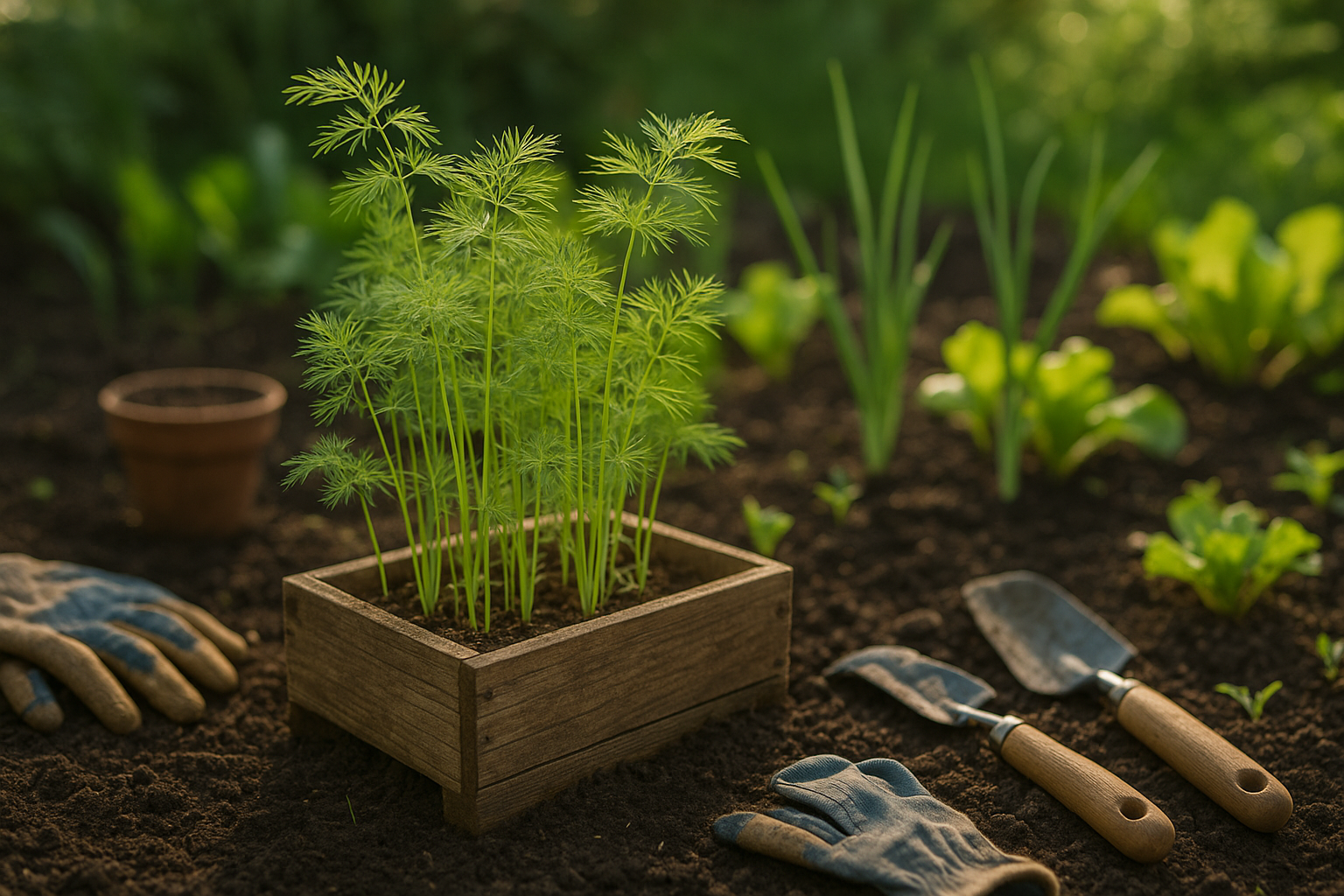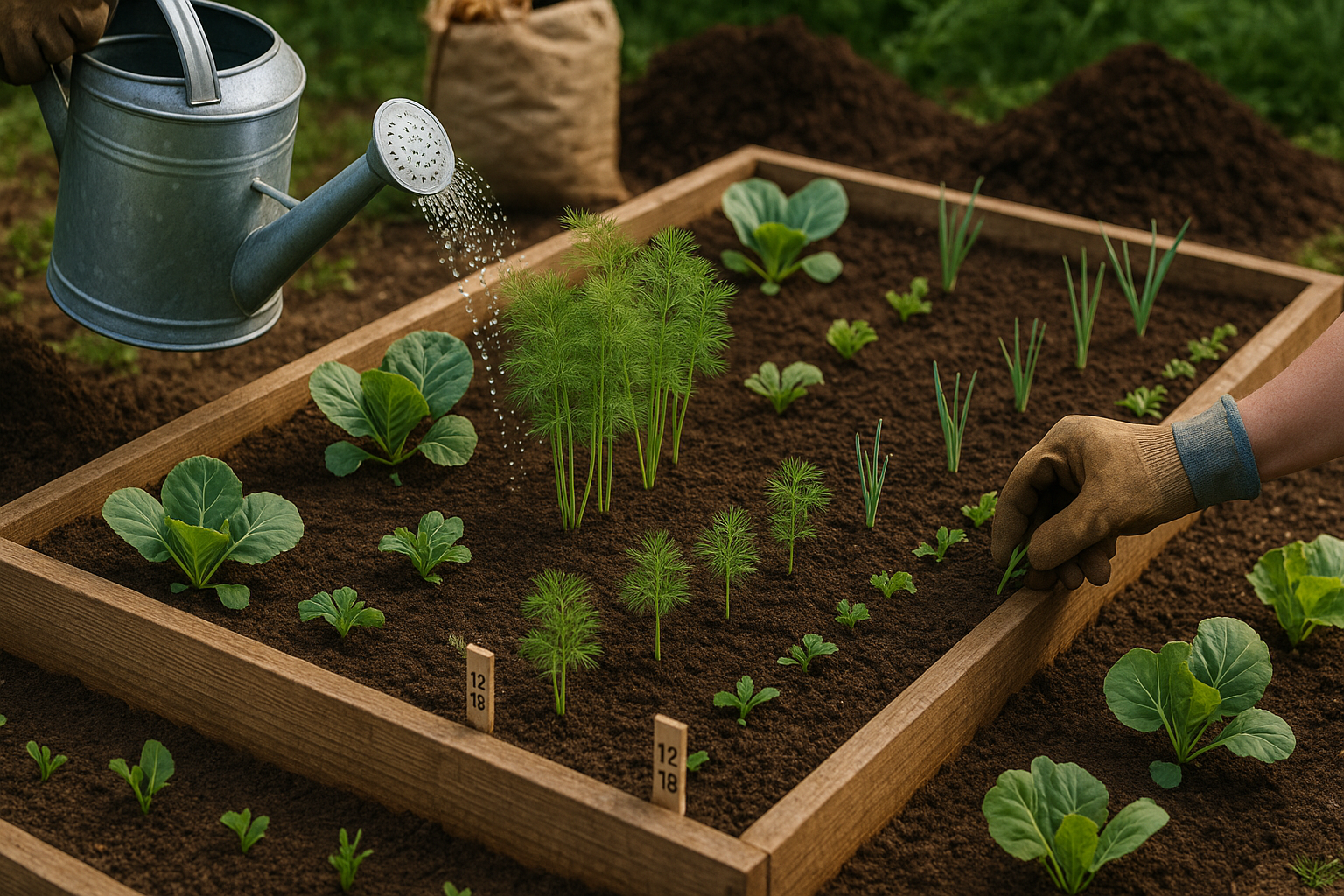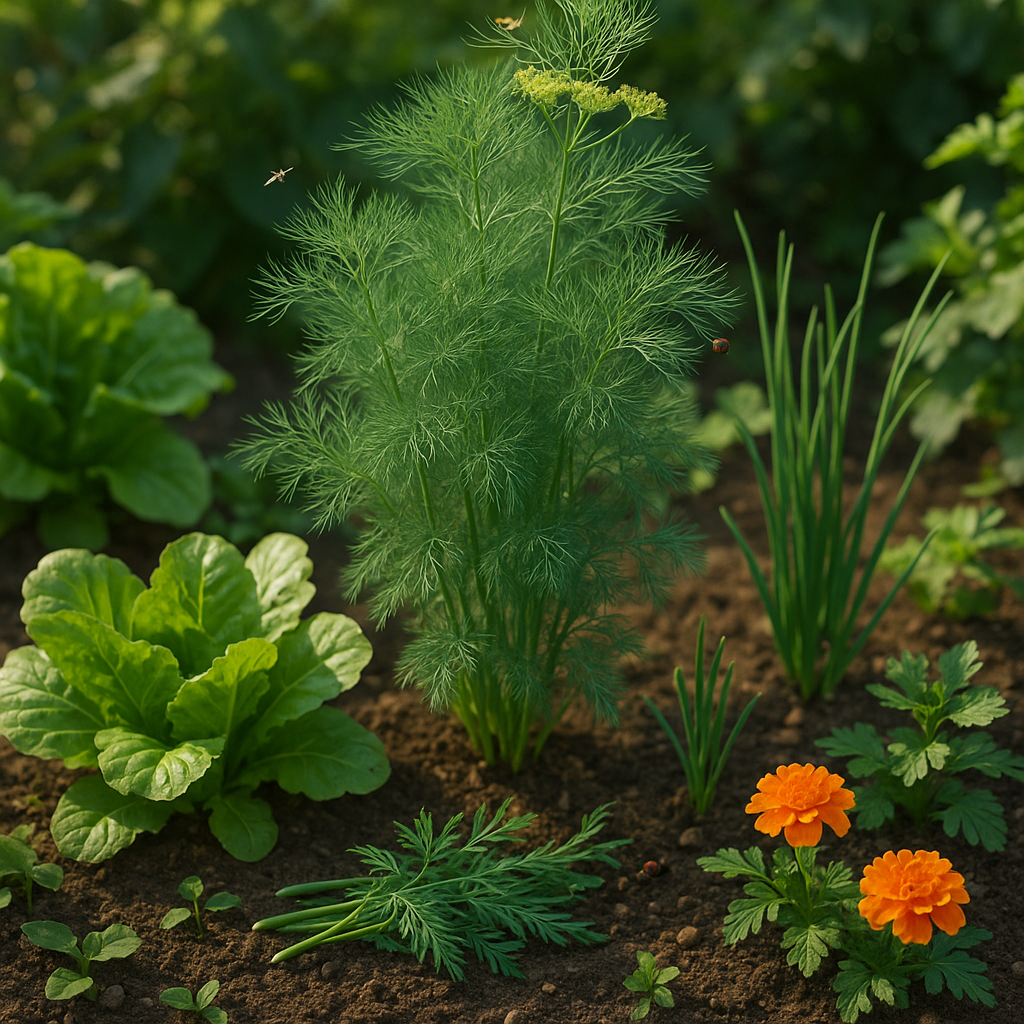Introduction to Dill and Companion Planting

Dill companion plants are a hot topic among gardeners looking to get the most out of their herb gardens. With its feathery leaves and tangy aroma, dill isn’t just valued for its culinary uses—it’s also prized for attracting beneficial insects and deterring common pests. Grown worldwide, dill is easy to start from seed and thrives in sunny spots, often finding a place alongside vegetables and flowers in home gardens.
But knowing how and where to plant it can make all the difference. This is where companion planting comes in—a gardening method that pairs specific plants together so they support each other’s growth, boost yields, and help keep problems like pests or diseases in check. When choosing dill companion plants, you’ll want to think strategically: some neighbors (like cabbage or onions) benefit from dill’s natural pest-repelling properties, while others (such as carrots) may compete for resources or stunt each other’s growth.
As you plan your garden, it helps to know which plants will thrive next to dill and which are best kept apart. In this post, we’ll dive into real-life examples, including what to grow—and what to avoid—to help your dill flourish, no matter your gardening experience.
Benefits of Companion Planting with Dill
Dill is a superstar in the garden, offering a natural way to boost plant health while reducing your reliance on chemicals. One of its standout traits is attracting beneficial insects like ladybugs, lacewings, and parasitic wasps, all of which prey on destructive garden pests such as aphids, spider mites, and cabbage worms.
If you’ve ever struggled with pests devouring your tomatoes, peppers, or brassicas, a strategic row of dill nearby can help create a balance where good bugs outcompete the bad. On the flip side, dill’s aromatic leaves act as a biopesticide, helping to repel troublesome insects like aphids and squash bugs—making it a natural, science-backed pest management solution.
Beyond insect control, dill is also known to enhance soil vitality. As dill grows, its deep taproot draws nutrients up from lower soil layers, making them accessible to neighboring plants and enriching the topsoil over time. When dill dies back, its decomposing foliage returns organic matter to the earth, improving soil structure and moisture retention.
Furthermore, dill’s feathery leaves provide light shade, reducing evaporation and creating a cooler, more humid microclimate for less heat-tolerant companions like lettuce and cucumbers.
Research and countless gardeners’ experiences confirm that pairing dill with crops such as cabbage, onions, and corn leads to healthier yields and fewer pest problems. By incorporating dill into your garden beds, you’re leveraging a holistic, eco-friendly strategy that supports a thriving, balanced ecosystem right in your backyard.
Best Companion Plants to Grow with Dill
Dill is not only a flavorful herb but also a wonderful companion plant in the garden, offering benefits to a variety of vegetables and flowers. Pairing dill with asparagus is a classic match; dill attracts beneficial predatory insects like ladybugs and lacewings, which feed on asparagus beetle larvae, helping control pests naturally.
Corn benefits from dill’s ability to attract pollinators and repel aphids, supporting healthy corn growth. Planting basil near dill can boost the growth of both herbs, with basil’s pungent scent confusing pests like aphids and spider mites that might otherwise target dill.
Lettuce enjoys the shade that dill provides as it matures, keeping the soil cool and moist and discouraging bolting. Chives, with their mild onion scent, repel carrot flies and aphids, offering an extra line of defense to dill and other nearby crops.
Marigold is famous for deterring nematodes and attracting hoverflies that prey on aphids, making it a fantastic border plant alongside dill. Finally, cucumbers benefit from dill attracting pollinators and predatory insects that eat cucumber beetles.
When growing dill with these companions, space plants appropriately so dill can reach its full height without shading out smaller neighbors—about 12-18 inches apart is ideal. Rotate dill with other crops each season to keep soil healthy, and avoid overcrowding, which can lead to fungal diseases.
In containers, combine dill with compatible herbs or leafy greens, ensuring the container is deep enough to support its long taproot and receives at least six hours of sunlight. Keep soil evenly moist but never waterlogged, and pinch back dill flower heads if you want to encourage more leafy growth.
With a bit of planning, dill can be the perfect partner in both garden beds and container collections, making your harvests more robust and your garden more vibrant.
How to Plant and Care for Dill Alongside Companions

Planting dill alongside compatible garden companions like cabbage, onions, and lettuce can boost your garden’s health and flavor, but it’s important to plan carefully. Start by choosing a sunny location, as dill thrives with at least 6 hours of direct sunlight each day. Prepare well-draining soil and enrich it with compost—dill prefers a neutral to slightly acidic pH between 5.5 and 6.5.
When sowing seeds, plant them about ¼ inch deep and space them 12 to 18 inches apart; this prevents overcrowding and gives both dill and companion plants enough room for their roots to grow without competing for nutrients. Avoid planting dill near carrots and tomatoes, as these can stunt each other’s growth.
Water your dill regularly, especially during dry spells, but avoid overwatering—soil should be kept moist but never soggy. As your dill grows, thin the seedlings if necessary to maintain the recommended spacing, which helps airflow and deters disease.
For maintenance, pinch off flower heads if you want to prolong leaf harvest, or let some go to seed to attract beneficial insects and enjoy self-seeded plants next season. Keep an eye out for pests like aphids; encouraging ladybugs or gently spraying with water can help control them.
By following these tips and choosing ideal plant partners, you’ll help dill flourish while boosting the productivity of your entire garden.
Plants to Avoid Growing with Dill
When planning your garden, keep in mind that dill doesn’t get along with every plant. Carrots are a key example—since dill and carrots are close relatives, they can easily cross-pollinate, resulting in stunted or oddly flavored crops.
Tomatoes are another plant to avoid pairing with dill because dill can stunt tomato growth if it flowers nearby. Most brassicas, such as cabbage, broccoli, and cauliflower, are also incompatible since dill can attract pests like cabbage worms, making your brassicas more vulnerable.
Allelopathy—the release of chemicals that inhibit the growth of neighboring plants—is another factor, especially with brassicas. Plus, dill and other strong herbs can compete for root space and nutrients, particularly in small garden beds or containers.
If you have limited space or want greater garden diversity, try growing dill alongside onions, lettuce, or cucumbers. These plants benefit from dill’s ability to attract pollinators and beneficial insects, helping you make the most of your garden plot without unnecessary competition or pest problems.
Common Questions about Dill Companion Planting
A frequent question gardeners have is whether dill can be planted near tomatoes. While young dill plants can actually benefit tomatoes by attracting beneficial insects and deterring pests like tomato hornworms, mature dill can stunt tomato growth. So, it’s best to transplant dill away from your tomato beds as it gets larger.
Another common myth is that dill and carrots can be grown together. Because both plants are in the same family, they can cross-pollinate and compete for similar nutrients, potentially resulting in weak growth for both. If you want to grow both, keep them in separate beds or rotate them yearly to avoid competition and disease buildup.
Some gardeners also wonder if dill can help cucumbers. In practice, dill’s strong aroma can mask cucumber scents and may help confuse pests, making it a generally good companion.
Every garden has its own microclimate and soil conditions, so don’t be afraid to experiment—observe how your plants respond and adjust pairings each season for the healthiest garden possible.
Conclusion and Next Steps for Your Herb Garden
Ready to take your herb garden to the next level? Try dill companion planting and discover how much healthier and more productive your plants can become. By pairing dill with the right neighbors—like basil, lettuce, or cucumbers—you’ll naturally repel pests, boost growth, and create a vibrant, resilient garden.
Smart plant pairings save time and effort, while adding beauty and variety to your space. Don’t hesitate to experiment with different combinations until you find what works best for you.
If you have any questions or want to share your own success stories, jump into the comments below—we’d love to hear how your garden grows!
